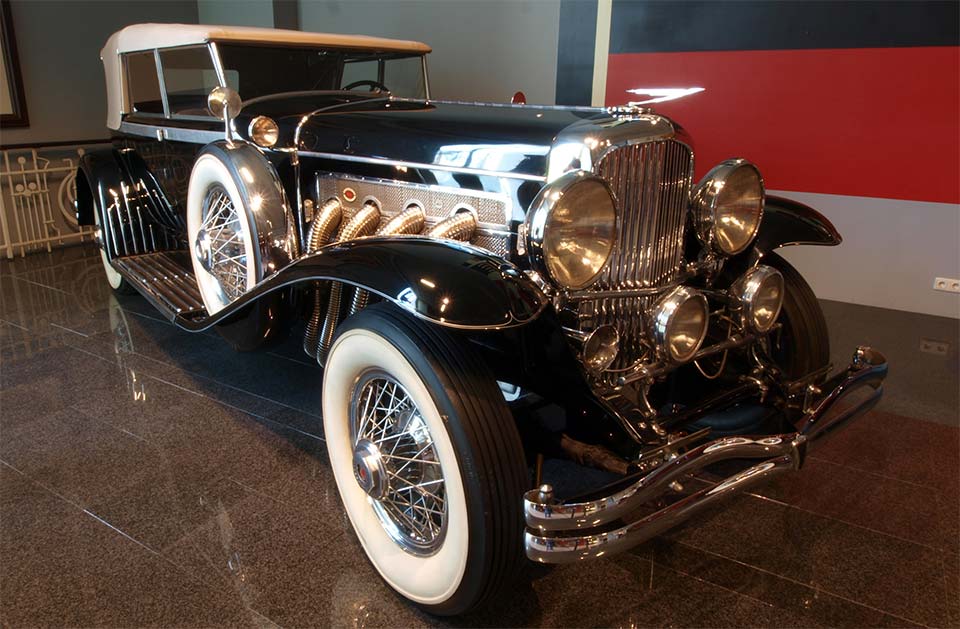How Old is a Vintage Car?
Posted by Collectors Auto Supply on Nov 10th 2020
Are you thinking about stepping into the world of old cars? If you are, then one of the first things to know is the difference between the designations of vintage, antique and classic. Even though the terms are sometimes used interchangeably among non-enthusiasts, there is a difference between each term. In order to be considered a vintage car, the vehicle has to be made between a specific historical time period, which is between 1919 and 1930. That means many vintage vehicles are now nearly a century old!
Let's take a quick look at the difference between the three terms.
Antique Cars

This is often a state classification that includes a special license place. Usually, the car is over 45 years old and is kept in a maintained state that closely resembles the original manufacturer specifications.
Classic Cars

There's some overlap here with antique cars, but cars are considered to be classic when they're over 20 years old but not more than 40 years old. Again, the classic car must be repaired and maintained so that it resembles the original design and manufacturer specs. This means it can't be significantly altered or modified. Sometimes there's also a requirement for the car to be manufactured after 1925. To sum up, all classic cars are usually also considered antiques, but not all antiques are classics.
Vintage Cars

Some overlap exists here too. Vintage cars are generally cars made between 1919 and 1930. This means there's a small overlap between vintage and antique cars. Unlike the classic and antique designations, vintage cars don't have to be completely original to manufacturer specs. As the cars are so old, many vintage auto parts have been remade and improved.
A Brief History of Vintage Cars

Vintage cars were made in the era of transition. In 1919, cars were still fairly rare. When they were on the road, they still shared it with horse-drawn carriages. However, by 1930, automobile production had ramped up considerably. It was such a booming business that the incredible rate of production wasn't topped again until the 1950s. As the car became more popular in this time period, most countries started making paved roads. Since cars no longer had to be made for unpaved roads, manufacturers focused on making them more comfortable and convenient. Some new features that were introduced included:
- Car heating via a heater radiator
- Four-wheel braking with a foot pedal
- Hydraulically actuated brakes
Many vintage cars and trucks from this era have been fully restored using vintage car and truck parts that are faithfully made in the modern era to resemble the old parts.
When Is a Vintage Car Rare?

A rare vintage car is usually one that had a limited production run, which means far fewer were made than some other models. It can also describe a car that is in good shape and mostly original. Many vintage cars have been turned into hot rods over the years, which ruined their original condition, and usually decreases their value among collectors. Some cars that were widely produced can still be worth money if they're in excellent shape and are mostly original. For example, the Ford Model A was widely produced, but if it's nearly original and in excellent shape, it can be valued at around $20,000.
How Are Vintage Cars Valued?

That brings us to the way that vintage cars are valued. Some factors that influence vintage car value include:
- Age
- Condition
- Rarity
- Modifications
- Mileage
Of course, the market for vintage cars among collectors tends to be the ultimate determining factor for value. In the simplest terms: the more desirable a car is among those who buy them, the more expensive it's likely to be. If the car is in short supply as well as desirable, then it will be even more expensive.
Vintage Car Condition Ratings
The other thing you'll need to know when stepping into the world of vintage cars is the condition ratings. This tells you what kind of condition the vehicle is in and how it might be priced accordingly. It also gives you an idea of how much work you'll need to do if you're buying a project vehicle. There are two main systems used to rate these conditions: categories and points. The two roughly correspond as follows:
- Perfect - Category 1 or 90 to 100 points. These vehicles are in original manufacturer condition like they just arrived on the lot.
- Excellent - Category 2 or 80 to 89 points. These vehicles have been restored to near-perfect condition.
- Fine - Category 3 or 70 to 79 points. These vehicles might be an original with some wear or have undergone restoration some years ago. Show quality vehicles often fall into this category.
- Very Good - Category 4 or 60 to 69 points. These vehicles are similar to category 3 but are often used as daily drivers and well-maintained.
- Good - Category 5 or 50 to 59 points. These vehicles have some wear and need work in various areas along with a minor amount of restoration.
The category system doesn't go any further, but the point system does. 30 to 39 points is a restorable vehicle, which means it's intact but needs parts and work. Below this and the vehicle requires extensive restoration (20-29) or may not be restorable at all (10 to 19).
If you're planning to buy a vintage, antique or classic auto, you can rely on Collector's Auto Supply for a wide selection of vintage car parts, automobile restoration supplies, and other auto restoration parts. Check our website for your make and model to find the parts you need.


